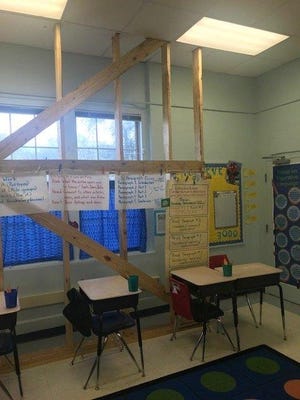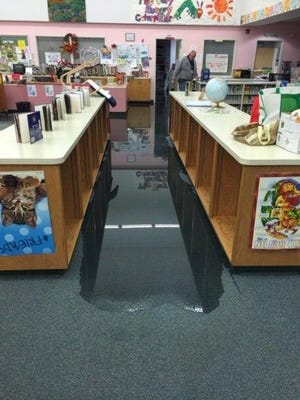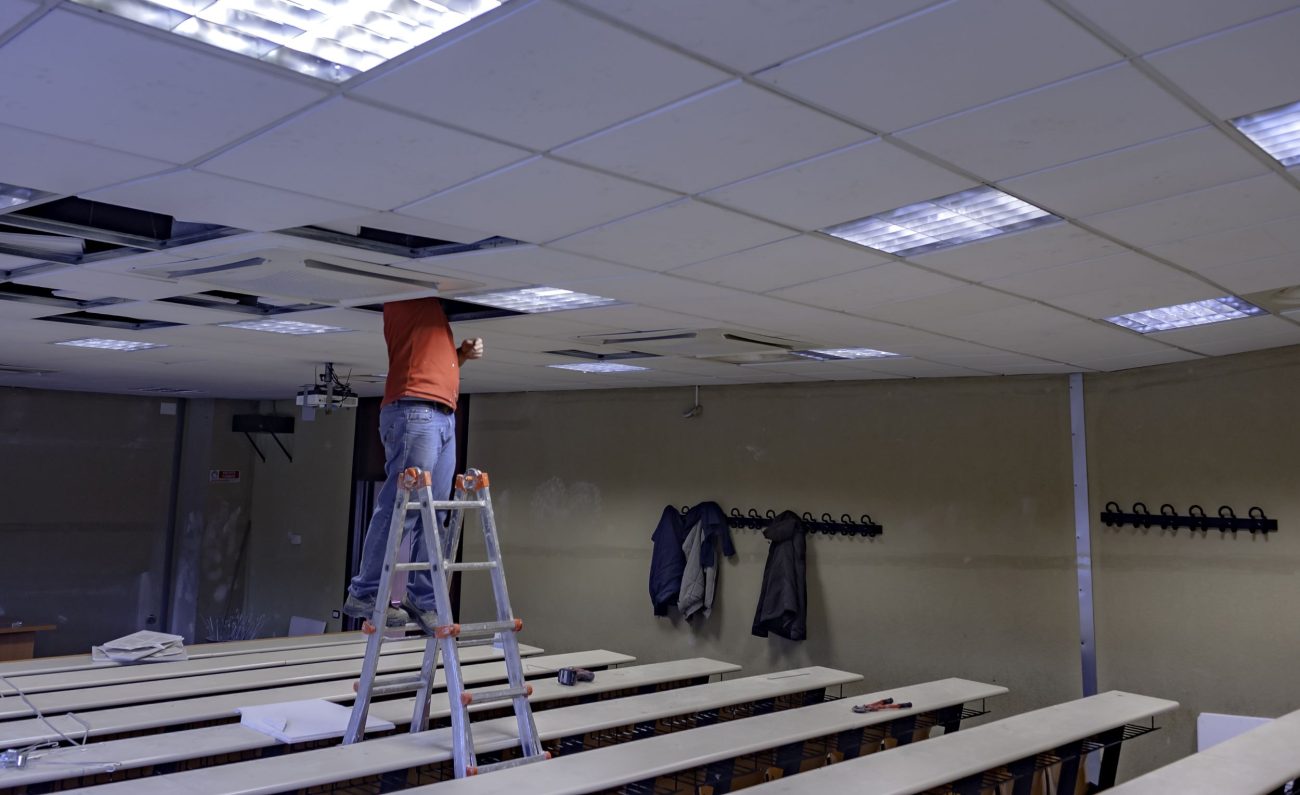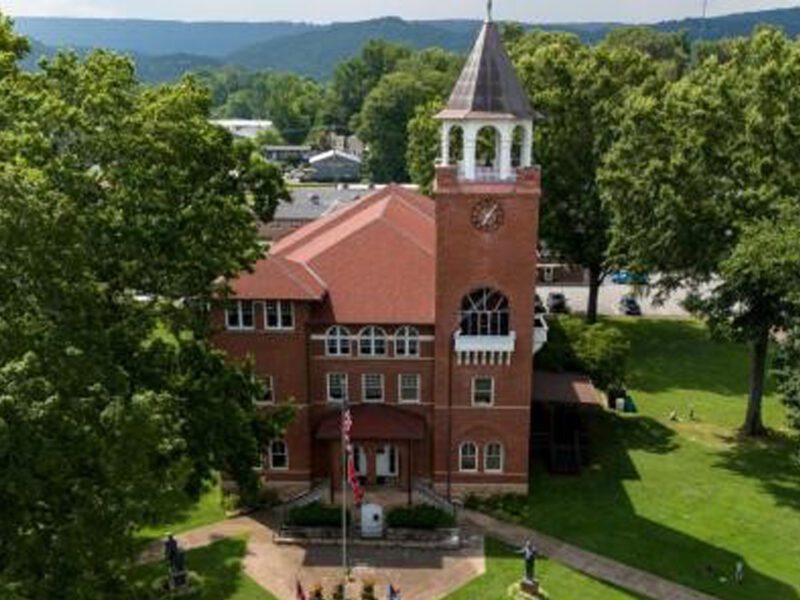Duval schools’ age shows; district says sales tax would ease years of maintenance backlog
The Florida-Times Union | by Emily Bloch and Steve Patterson | October 15, 2020

As voting starts in Jacksonville, Duval County voters will face a ballot question that’s been years in the making. Following a nearly-year-long battle between City Council and Duval County Public Schools, voters will now decide if a half-cent sales tax will pass
If approved, the sales tax would fund the school district’s master plan for school, safety and technology upgrades. The tax would be in place for 15 years and education stakeholders say it’s long overdue.
Duval County Public Schools’ 160-plus campuses face a bounty of issues including crumbling infrastructures, leaky roofs and broken air-conditioning systems. The Times-Union has documented these problems over the years, speaking to parents, teachers, students and other stakeholders who shared their frustrations with the dated facilities.
When the air conditioning would go out at Mayport Elementary School, Stacy McDonald Taylor, a mother of two, would order gallons of sweet tea, lemonade and ice from Chick-Fil-A on Hodges Boulevard for her son’s exceptional education unit. It happened so often, McDonald Taylor was known as a regular.
“[The staff there] will ask me, ‘oh my gosh, is the A/C out again?” she said in defense of the need for a sales tax.
Approval for the tax these days is largely bi-partisan, with about 52 percent of Republicans, 85 percent of Democrats and 77 percent of unaffiliated voters in support, according to a recent University of North Florida poll. But it wasn’t always that way, and polls show Republicans are still far more divided on the issue than Democrats and unaffiliated voters.
Michael Binder, the UNF Public Opinion Research Lab Director, says that’s to be expected.
“Republicans, by and large, are pretty opposed to tax increases,” Binder said. “The fact that a majority of Republicans are even supporting the referendum in UNF’s latest poll speaks volumes.”
Over the course of the last year, the sales tax went from the school board to a stalled process in the City Council that eventually led to a court battle regarding who had the power to place the tax on ballots and if the school district even had the right to sue the city in the first place.
Ultimately, a judge ruled that Duval Schools was an independent entity and did have the right to sue. From there, the groups settled outside of court, with City Council approving the ballot item for this November’s general election.
“I think why it took so long is entirely about the charter schools,” Binder said. “There are people in the Duval legislative delegation and City Hall that are very supportive of and receive a lot of donations from charter schools.”
When the sales tax was caught up in City Council committees the first time around, councilmembers including Rory Diamond, called for the sales tax revenue to be distributed across charter and traditional public schools on a per-pupil-basis instead of the per-square-footage model the school district wanted.
“In 2019, the main criticism conservatives had of the plan was that it did not protect school choice or freedom of education,” Diamond told the Times-Union.
Now-council president Tommy Hazouri called funding for charter schools the “elephant in the room” at the time.
“For today’s reluctant conservative voter, my understanding is that they don’t want a tax increase in the middle of economic crisis and there seems to be a level of distrust between conservative voters and the school board’s spending of taxpayer money before this request,” Diamond said. “Generally speaking, I think those voters are wondering why the school board let things get so bad in the first place.”
Ultimately, new state legislature that passed earlier this year forced a per-student payout model.
“Had the referendum been on the ballot and passed in 2019, charter schools would not have had access to a portion of the sales tax revenue,” Binder said. “If the referendum passes next month, the charter schools get a percentage of that revenue.”
According to the school district, if the sales surtax doesn’t pass this election season, some schools will probably close and the district would have to add more portable classroom units — instead of eliminating them, like the master plan calls for.
The Need
Duval Schools buildings are among the oldest in Florida, with the average building age being 44-years-old and some campuses more than 50-years-old. And even newer schools, like Atlantic Coast High School and Waterleaf Elementary School — which are more than 10 years old —have maintenance deferred because of a lack of funding, officials say.

Winston Seabrooks, 18, a vocal advocate in favor of the half-cent sales tax and a senior at Jean Ribault High School, has only attended older schools on Jacksonville’s Northside. He says that gives him insight others may not have.
“Hopefully getting these new and upgraded schools, the sides of town that have been left behind — mostly the sides of town with communities of color — will finally be able to get new things and have promises made,” Seabrooks said. “Because since the city’s consolidation, promises have been said but never met.”
Because of the schools’ age, district officials say the cost to maintain the buildings is growing along with the cost of the district’s deferred maintenance backlog.
Last year, school district officials told the Times-Union that Duval Schools had $243 million in deferred maintenance costs, with short-term maintenance and Band-Aid repairs costing $500,000 a month.
Now, the district says that number has risen to $384 million in deferred maintenance.
“As buildings age and we defer more unfunded maintenance,” District Spokesman Tracy Pierce said. “The total deferred maintenance will rise to more than $1 billion in about four years.”
Examples of big-ticket items that need to be fixed include roof replacement and air conditioning unit repairs, Pierce said.
“The roof at Paxon High School is estimated at almost $2.5 million, air conditioning and other mechanical issues at Edward White High School are estimated at almost $5.7 million,” Pierce said. “At smaller schools like Mamie Agnes Jones Elementary School, we are looking at about $1.4 million for the roof and $1.5 million for air conditioning and other mechanical problems.”

Seabrooks recalls coming back to class at North Shore Elementary School after a hurricane to a flooded classroom. In middle school at Lake Shore, he remembers periods of class in a row with no air-conditioning. He says that still happens at Ribault High School and since the campus has outdoor corridors, the weather impacts students’ mood and ability to learn.
“Jacksonville is a city moving and it is on the verge of booming,” Seabrooks said. “To be able to build new schools and to help the communities that have been left behind, it’s time we go after those communities and give the young people in those communities something nice to come to school to.”
He added, “Even though most of us may live in neighborhoods that are not beautiful, we should be able to come to a school that’s an example of us being great that will be modernized and give us the tools to be great.”
What about COVID-19?
Amid the coronavirus pandemic — Duval Schools’ building issues have raised more concerns among stakeholders. Before, a lack of air-conditioning was detrimental for learning and uncomfortable. But now, experts say it could lend to the spread of COVID-19, a respiratory disease.
On Oct. 5, the Centers for Disease Control added new guidance to its website about COVID-19, noting that the coronavirus can spread past six-feet, particularly in poorly ventilated areas.
The news is concerning with the district’s hybrid-school period — which had most in-person students alternating class days — now over and all grade levels who opted for in-person learning attending school daily.
In an email to staff and faculty, Superintendent Diana Greene said she receives notice that schools are without air-conditioning daily.
The first week of October alone, Duval Schools reported air-conditioning outages at six different schools: Jacksonville Heights Elementary, Darnell Cookman Middle-High, San Jose Elementary, Stonewall Jackson Elementary and Ed White High School. The issues ranged from chillers down in one specific region to school-wide outages.
According to Pierce, the pandemic has not caused additional backlog issues since major maintenance issues like air-conditioning repairs and roof replacements is performed by outside contractors.
“Our internal maintenance team members are the heroes that patch roofs and get A/C’s back up even though those systems are decades old and well past their expected life,” Pierce said. “This group did assist with helping schools prep for return to classes, but now that school is back in session, they are primarily focused on responding to repair needs.”
The facilities plan the school board adopted last year says that 26 schools are in poor enough shape they should simply be demolished and replaced.
But there are needs beyond brick and mortar that affect schools across the county.

Technology Upgrades
Probably 70 to 80 percent of Duval County’s schools have outmoded data cables that keep computers and communications systems running slower than they should, said Jim Culbert, the school system’s chief information officer.
“Bandwidth utilization is just incredible,” Culbert said. Equipment that’s built to run at gig speed is lagging because the lines connecting classroom devices are simply behind the times.
Cables are part of a roll of technology items school district officials have marked for updates if voters approve the sales tax increase. From digital clocks and network switches to intercoms and laptop lockers, the inventory is strikingly un-sexy, but loaded with usefulness.
Computers are not part of the technology shopping list.
The school system spends about $11 million per year now buying laptops and related equipment and has a contract for IT consultant Emtec Inc. to deliver and maintain those through 2022, with options for years after that.
Currently, the school district is waiting to receive laptops it purchased over the summer to help close the technology gap that the coronavirus pandemic inadvertently widened — when hybrid classes and digital assignments forced a greater reliance on at-home devices. The goal is for one laptop per each student in the district by the end of fall term, the district said.
But there’s plenty of other equipment that can make big differences in how students and teachers spend their days.
Northwestern Legends Elementary School has become a prototype for the kinds of upgrades schools could see if the sales tax passes, school officials have said.
The 63-year-old building on West 45th Street was Northwestern Middle School until falling enrollment left it marked for shutdown last year. The old building was outfitted with new technology and rechristened as an elementary school in August, just in time to receive relocated students arriving from the former St. Clair Evans Academy Elementary.
Seventy-five-inch interactive monitors with Windows 10 touch screens were installed between pairs of white boards in classrooms.
Document cameras were set up to capture images and move them onto the same monitors like crisper versions of the overhead projector images that students’ parents and grandparents remember.

And because it’s 2020, equipment added to the classrooms was all wireless.
“The classroom is really transformed,” Culbert said, so that teachers can easily move around as they work and interact with children. “You really don’t want teachers tied up by wires.”
The equipment “connects with the current generation,” said Northwestern Legends Principal Lawanda Polydore. She ran St. Clair Evans when its school tests scores rose from a D to a B two years ago, and said the kids at her school should be the first of many getting equipment to help them learn.
“The students here deserve it,” Polydore said. “They deserve the best we can give them to close their achievement gap. … If we can get the tax passed, we can do it for a number of other schools.”
Safety and Security
Other items in the sales-tax plan are aimed at increasing safety during emergencies like school shootings. New voice-over-internet phones installed at Northwestern Legends connect to an intercom system where a teacher in a single classroom can trigger a code red alarm alerting the whole school to an emergency.
Money would be earmarked for more electronic access controls on school doors and for new burglar and fire alarm systems, although school officials have refused to discuss details based on security concerns.
The plan also envisions more security cameras and replacing single-direction cameras with new ones that show multiple angles. Some schools have upgraded already — Andrew Jackson High went from 36 views to about 150, Culbert said — but many still require improvement.
“When I was in seventh grade at Landon Middle School, we had a Code Red because someone with a gun was in the building next to the school,” Savannah LeNoble, 17, recalled.
LeNoble has been a vocal advocate in favor of the sales tax. She has participated in Jacksonville Public Education Fund panels to speak in favor of the tax.
“That Code Red made the students and parents take a second look at how safe Landon really was,” she said. “The administration found big flaws with the campus such as the lack of a security system on the doors, the ability to get into the school without going through the office, and the football field that was off-campus and accessible to anyone.”
Every traditional Duval County public school building was constructed before the Marjory Stoneman Douglas High School shooting in Parkland, Florida in 2018. And most schools were built before the Columbine High School massacre in 1999.
Since then, guidance has changed in how school buildings can better safeguard against the worst. According to Pierce, the district used recommendations from the Marjory Stoneman Douglas Task Force to help guide their security enhancement strategy.
“There are design strategies that can be built into schools that increase security, such as double-entry areas, self-locking classroom doors, security cameras and fencing to close off campus areas,” Pierce said. “We would also take advantage of those innovations in design and construction that have occurred in the last 20 years in response to the external factors impacting school safety.”
Examples Pierce provided of security upgrades included modern security camera systems, 365-degree security barriers, vestibules to restrict access in school entranceways to block access to main corridors, automatic locking doors with access control cards, tinted windows to prevent easy visibility and more.
School classrooms would have established and “enhanced” hard-corners — the designated zones away from windows or doors for students and teachers to flock to in the event of a school shooting — Pierce said. Some older classrooms and portable classrooms lack those hard-corner areas. Campus lighting would also be improved to enhance night time security.
‘Eventually, the pandemic will end’
Currently, more than 70 percent of Duval Schools students are back in the classroom, according to Pierce with the remainder opting for virtual school.
Because the school district is allowing students to transfer back to in-person class quarterly throughout the school year but not into its virtual school platform, Duval HomeRoom, Pierce says the number of students in buildings might even grow by the school year’s end.
To accommodate for traditional public school student population numbers projected decreasements with added options like charter and private schools, 33 of the district’s underutilized buildings are expected to be consolidated into 17 schools, the master plan details.
“Remember, the master facility plan and the proposed half-penny is a long-term, 15-year plan,” Pierce said. “Eventually, the pandemic will end, and all students will be back in schools.”






